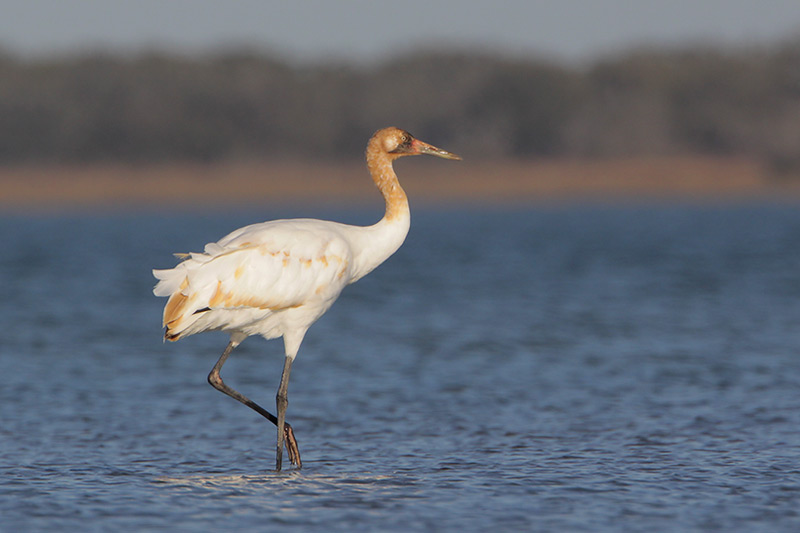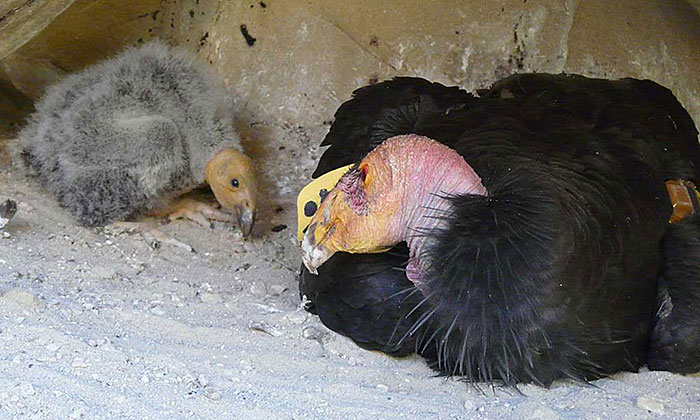
Birds have wings, which makes traveling fairly easy for them – but sometimes they venture off to unknown lands.
Reporting a rare bird comes in handy here – it gives ornithologists better knowledge of different species and might even help them protect these birds better.
First Step – Identification
When you see a rare bird, the first step should be making sure this bird is indeed the bird you think it is. Nowadays, there are countless guides online, even our site has several identification guides – from identifying by color and body shape, to habitat, size, and region (U.S. states).

Photograph USFWS
If you don’t find answers yourself, bridging groups are a great resource too. In case you happen to have a picture, it’s even easier to ask for help. If you think you spotted a rare bird, you can also ask your local ornithologists for help.
These seasoned experts do this every day and have an excellent understanding of the birds living in your area.
The Concept of Rarity
The American Birding Association has different checklist codes to monitor populations. They monitor North America, and some additional areas.
- Code-1 and Code-2: Regularly occurring birds. Includes regular breeding species and visitors.
- Code-3: Rare. Species that occur in very low numbers, but annually, in the area. This includes visitors and rare breeding residents.
- Code-4: Casual. Species not recorded annually in the area but with six or more total records—including three or more in the past 30 years—reflecting some pattern of occurrence.
- Code-5: Accidental. Species that are recorded five or fewer times in the area or fewer than three records in the past 30 years.
- Code-6: Cannot be found. The species is probably or actually extinct or extirpated from the area, or all survivors are held in captivity (or releases are not yet naturally re-established).
Who To Notify?
American Birding Association
To notify the American Birding Association (ABA) about a rare bird sighting, you can follow these general steps:
- Accurate identification: Ensure accurate identification of the bird species. Take detailed notes or photographs, if possible, capturing key features for verification. When creating the report, include the species, the state/province you saw it in, and the date you saw it.
- Check ABA Area Codes: Confirm that the bird sighting falls within the ABA area codes. The ABA has defined specific regions, and the rarity must be within these boundaries to be considered for their rare bird alerts. Refer to the State, Province, and Territory Review Lists. Additionally, regardless if it’s on any of the latter lists, if the species has an ABA rarity code of 4 or higher on the ABA Checklist, then you can submit your findings.
- Submit to Local Rare Bird Committees: Some states or regions have their own Rare Bird Committees. Before contacting the ABA, check if there is a local committee for the area where the bird was spotted. Submit your sighting to them first.
- Contact the ABA Rare Bird Alert Group: If the bird is within the ABA area, you can notify the ABA Rare Bird Alert Group. You can do this by emailing them directly or contacting their Facebook group. Provide detailed information, including your name, contact information, location of the sighting, date, and a detailed description or photographs of the bird.
- Cooperate with Verification Process: Be prepared to cooperate with any verification process. This could include providing additional information, participating in interviews, or allowing experts to review your documentation.
Remember, the process may vary slightly depending on the specific region and the ABA’s current protocols. Check the ABA website or contact them directly for the most accurate and up-to-date information on reporting rare bird sightings.
eBird Alerts
Notifying eBird about a rare bird sighting is a straightforward process, and it involves submitting your observation through the eBird platform. You can use the platform to report all your findings regardless of rarity. Here’s a step-by-step guide:
- Create an eBird Account: If you don’t already have an eBird account, visit the eBird website and sign up for a free account.
- Log In to Your eBird Account: Once you have an account, log in using your username and password.
- Submit a Checklist: To report a rare bird, you need to submit a checklist. Click on the “Submit” tab on the eBird homepage.
- Enter Location and Date: Specify the location and date of your birding observation. You can either choose a location from the eBird database or enter a new location. Specify the effort you put into birding, including what distance you covered and how long you spent doing the activity.
- Add Species: Begin adding the species you observed during your birding outing. Use the eBird checklist to enter the names and quantities of the birds you saw.
- Include Rare Bird Details: Provide detailed information in the comments section for the rare bird sighting. Include a thorough description of the bird, its behavior, and any other relevant details. If possible, attach photos or audio recordings.
- Submit Your Checklist: After completing the checklist and adding comments, submit your observation to eBird.
- Review and Confirmation: eBird has a team of regional reviewers who will assess and verify rare bird sightings. Answer any follow-up questions or requests for additional information.
- Check Regional Alerts: Once your rare bird sighting is verified, it may be featured on regional rare bird alerts or other eBird outputs.
Keep in mind that eBird doesn’t have a separate checklist for the bird’s rarity. These alerts are used to notify people about rare birds from ABA code 3 and above in the ABA area.
NARBA
NARBA, short for North American Rare Bird Alerts, provides rapid reports of ABA Code 4 and 5 birds. They may also be interested in a select few Code 3 and the rare Code 2 bird, depending on the location. You may take the following steps to report your finds to them:
- Gather Information: Before notifying NARBA, gather and mark down essential information about the sighting. This includes the species of the bird, the specific location (as precise as possible), and the date and time of the sighting.
- Verify Rarity: Ensure that the bird you’ve seen is indeed rare or potentially of interest to birdwatchers. Rare bird sightings include ABA Code 4 and 5 birds and a select few ABA Code 3 and 2 species that are unusual for the region or are out of their normal range.
- Submit a Report: Visit NARBA’s website and look for a section where you can submit rare bird reports for up-to-date contact information. Currently, NARBA instructs you to send your rare bird reports to the following e-mail: [email protected].
- Include Detailed Information: When submitting your report, be as detailed as possible. Provide the species name, location, date and time of the sighting, and any other relevant information about the bird’s appearance or behavior. If you have any photographs or recordings of the bird, attach these to your report. Add your contact information in case they need to contact you.
- Follow Up if Necessary: After submitting your report, monitor NARBA’s communications channels to see if your sighting is acknowledged or shared with the broader birding community. Sometimes, further clarification or details might be requested.
Additional Resources
eBird state-based information – eBird’s state-based information is a great way to check which birds have been spotted in your state. Choose the location and a time period. After this, the results are dissected by months. This is an excellent way to see breeding patterns and changes in population.
Read next: Birding apps that make things easier
